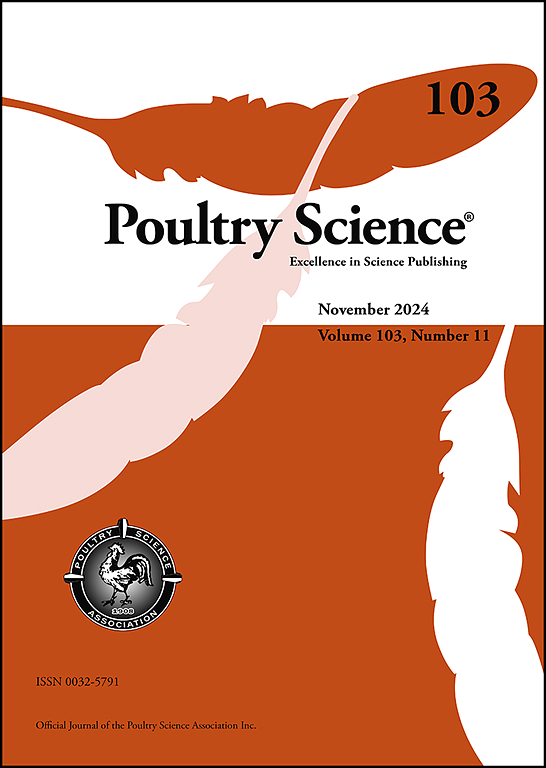Development of a bacteriophage cocktail with high specificity against high-risk avian pathogenic Escherichia coli
IF 3.8
1区 农林科学
Q1 AGRICULTURE, DAIRY & ANIMAL SCIENCE
引用次数: 0
Abstract
Avian pathogenic Escherichia coli (APEC) is a widespread pathogen that poses a significant threat to the poultry industry globally. A recent typing scheme has proposed several APEC pathotypes, including non-APEC, High Risk non-APEC (HR non-APEC), APEC, and High Risk APEC (HR APEC), based on the presence of the ompT and hlyF genes, sequence types (ST) ST131, ST23, ST428, ST355, and the O78 antigen. In Brazilian broiler farms, a higher prevalence of lesions in carcasses has been linked to the presence of HR APEC pathotypes. Due to the growing concern over antimicrobial resistance, bacteriophage-based formulations are emerging as a promising alternative for controlling APEC outbreaks. In this study, we isolated and sequenced 142 strains from Brazilian commercial broiler farms, classifying them as APEC (70), HR APEC (12), HR non-APEC (3) and non-APEC (57). Notably, 38 % of the isolates were classified as multi-drug resistant (MDR), with serotypes H10 and ST155 being the most frequently identified. Additionally, we isolated, sequenced, and classified 66 bacteriophages that exhibited lytic activity against these bacterial strains in both qualitative and quantitative assays. Eight of the bacteriophages demonstrated complementary host ranges against the bacterial collection. Bacteriophage cocktails were assembled, tested in quantitative assays, and shown to be effective against APEC. A cocktail consisting of four bacteriophages (AC-01) displayed a broad lytic spectrum in vitro, inhibiting the growth of 56.3 % (n = 80/142) of the isolates with a mean inhibition of 32.9 %. Remarkably, the in vitro lytic activity of the cocktail was significantly more effective against HR APEC isolates (12/12, 65.9 % mean inhibition) and HR non-APEC isolates (3/3, 58.0 % mean inhibition). Our results emphasize the importance of genetically characterizing target bacteria when developing an effective and specific bacteriophage cocktail against APEC.
求助全文
约1分钟内获得全文
求助全文
来源期刊

Poultry Science
农林科学-奶制品与动物科学
CiteScore
7.60
自引率
15.90%
发文量
0
审稿时长
94 days
期刊介绍:
First self-published in 1921, Poultry Science is an internationally renowned monthly journal, known as the authoritative source for a broad range of poultry information and high-caliber research. The journal plays a pivotal role in the dissemination of preeminent poultry-related knowledge across all disciplines. As of January 2020, Poultry Science will become an Open Access journal with no subscription charges, meaning authors who publish here can make their research immediately, permanently, and freely accessible worldwide while retaining copyright to their work. Papers submitted for publication after October 1, 2019 will be published as Open Access papers.
An international journal, Poultry Science publishes original papers, research notes, symposium papers, and reviews of basic science as applied to poultry. This authoritative source of poultry information is consistently ranked by ISI Impact Factor as one of the top 10 agriculture, dairy and animal science journals to deliver high-caliber research. Currently it is the highest-ranked (by Impact Factor and Eigenfactor) journal dedicated to publishing poultry research. Subject areas include breeding, genetics, education, production, management, environment, health, behavior, welfare, immunology, molecular biology, metabolism, nutrition, physiology, reproduction, processing, and products.
 求助内容:
求助内容: 应助结果提醒方式:
应助结果提醒方式:


